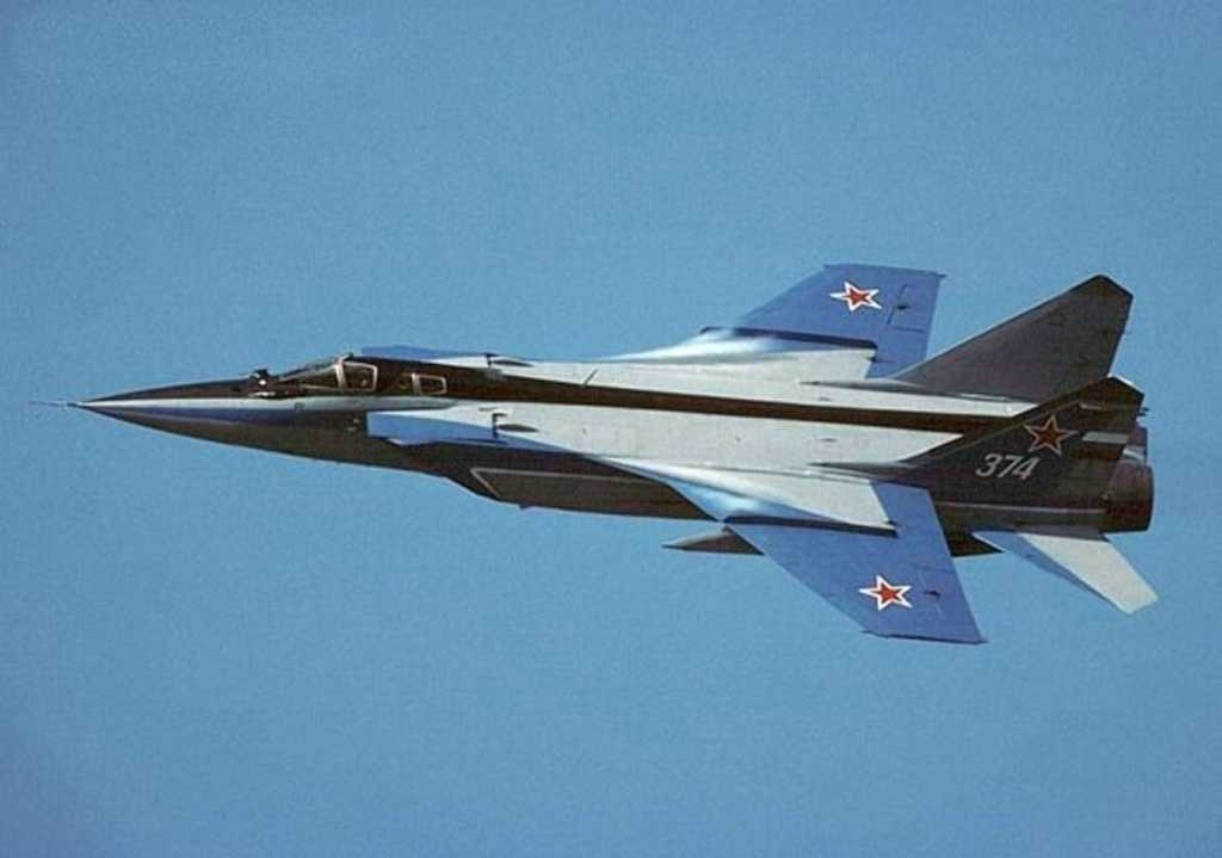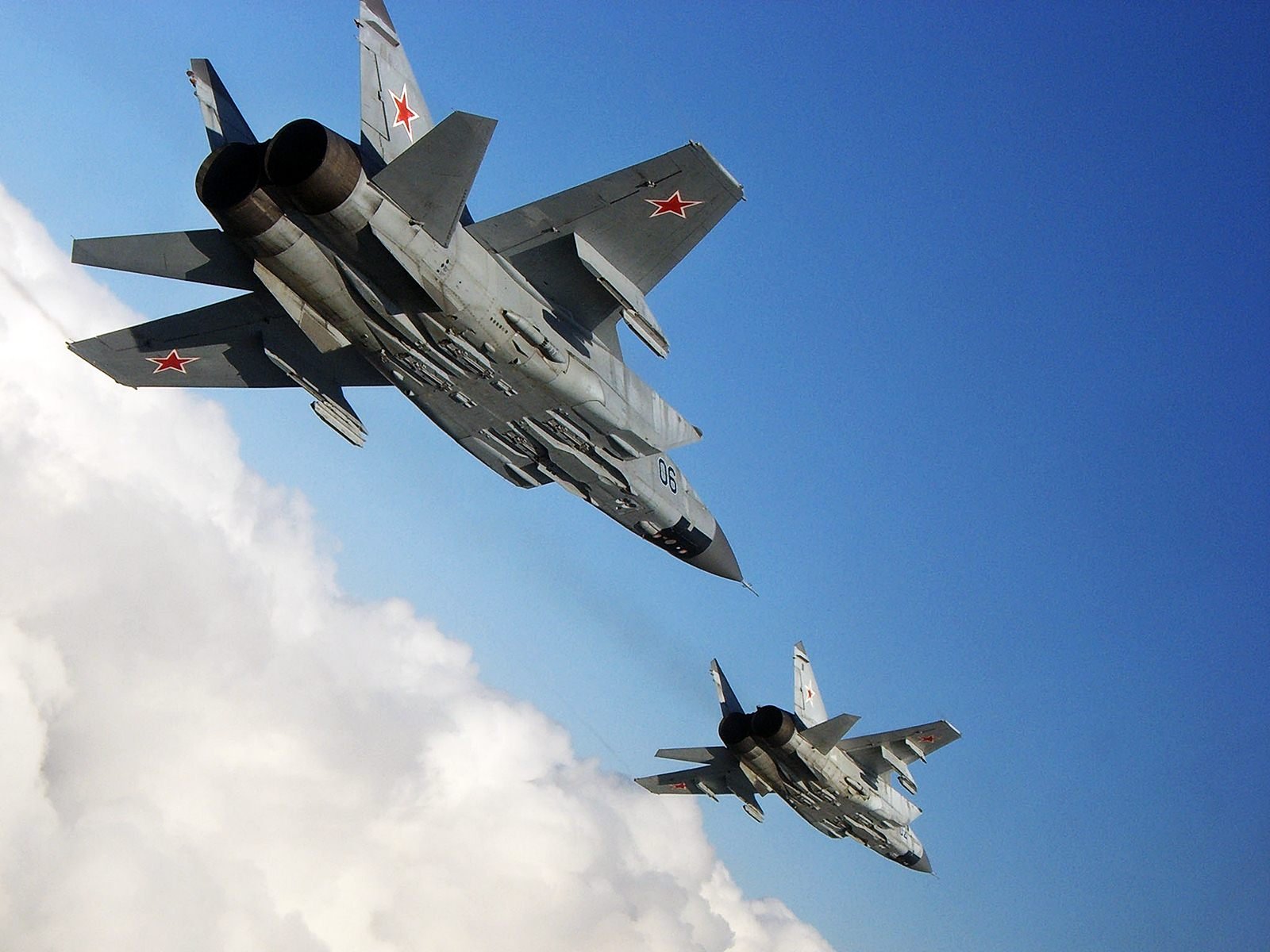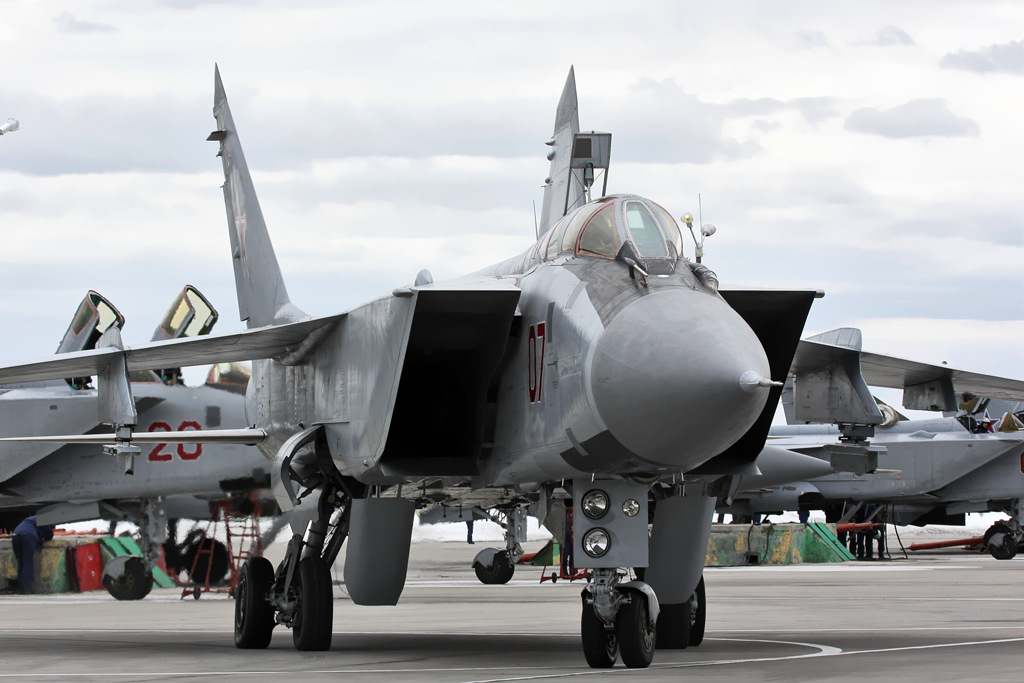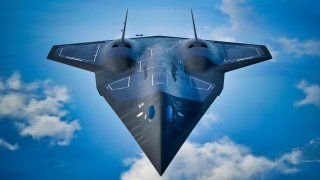MiG-41: Russia Wants a Mach 4 Fighter That Shoots Lasers at Missiles
Russia has announced plans to develop a highly advanced fighter jet, the MiG-41, to replace the MiG-31 Foxhound. But it seems likely the plane will never fly.
What You Need to Know: Russia has announced plans to develop a highly advanced fighter jet, the MiG-41, to replace the MiG-31 Foxhound.

-Claimed to reach altitudes near space and speeds beyond Mach 4, the MiG-41 is designed with futuristic technologies, including anti-missile lasers and directed electromagnetic pulse (EMP) weapons.
-Despite bold assertions, skepticism surrounds Russia’s ability to meet its ambitious goals by the 2030s, given that much of the proposed technology is experimental, and the MiG Corporation has struggled to meet existing demands for the MiG-35.
Mach 4 and Space Capabilities: The MiG-41 Fighter Jet Explained
Russia is planning to “push the boundaries of aviation engineering” with the development of its newest fighter, the MiG-41, which is a proposed replacement for the MiG-31 “Foxhound.” According to Russian sources, the MiG-41 will fly at altitudes that no other warplane can fly—not only to the highest points in the atmosphere, but to lower space, if necessary, as well.
It gets better, Russian aviation sources have been whispering that the MiG-41 will be so superior to anything deployed by other countries that “it will introduce features not seen by the aviation world yet.”
If the Russians are to be believed, we’ve come a long way from the dark days when Mikoyan Aircraft Corporation (the makers of MiG), following the collapse of the Soviet Union, could not produce its fifth-generation warplane, the supposed rival to America’s F-22A Raptor, the MiG-1.44.
Russia’s Sixth-Generation Warplane Fantasies
Of course, it wasn’t just the 1990s and early 2000s when the MiG Corporation could not live up to its extravagant promises.
Even today, as the Ukraine War rages—which Russia’s strongman, Vladimir Putin, has described as an existential struggle for Russia—the MiG Corporation cannot meet Russia’s demand for their MiG-35 product. And the MiG-35 is a relatively easy plane to build compared to the proposed MiG-41.
Still, in today’s upside-down world, it rarely serves anyone to underestimate their rivals.

Whatever one’s opinion about Russia in the wake of their illegal invasion of Ukraine, the fact of the matter is that, generally speaking, Russia’s defense industrial base has benefited greatly from the war (whereas Western defense industrial bases, both in Europe and the United States, can barely keep up with peacetime demand, let alone wartime commitments).
In fact, it looks as though the situation from the 1990s and 2000s might be slowly reversing with the United States looking like the declining power with a shrunken and decrepit industrial capacity versus the Russians, who are reinvigorated by their war against Ukraine (and, therefore, NATO).
Anyway, the proposed MiG-41 has some truly insane-sounding capabilities that almost demand one be skeptical until one actually sees the proposed warplane in action.
MiG-41" The Last Starfighter…in Russia?
Supposedly the MiG-41 is capable of going beyond Mach 4. Russian designers want to equip the warbird with an anti-missile laser, too. Relatedly, Mikoyan aims to place first-of-their-kind directed electromagnetic pulse (EMP) weapons onboard the bird to be used against rival fighters in a dogfight.
These weapons are non-kinetic and target the electronics of a rival warplane, knocking them out, turning that rival warplane into a falling brick.
Russia’s military claims that its directed EMP weapons will be ready for testing by next year. Again, remain skeptical about these claims until verifiable proof is released about the existence of these systems.
One reason for the MiG-41’s potential space-borne flight capabilities is its unique pulse-detonation engines.The internet is chock full of conspiracy theories about secret US military planes using this advanced and innovative engine system to cruise at incredible speeds and altitudes. But the US military has never confirmed that they have, in fact, developed such capabilities.
The Russians, however, are claim that their next major warplane will employ this method of travel. Let’s just say the engine system is a work-in-progress.
Yet, MiG Corporation insists that the test flight for this bird will be next year.

After that, Russia asserts that the MiG-41 will go into mass production for deployment by the 2030s. Given that nearly every aspect of this proposed warplane is experimental, it seems unlikely that the Russians will meet these lofty timelines, despite their defense industrial base being reinvigorated by the Ukraine War.
After all, if MiG Corporation is struggling to meet the increased demand for the conventional MiG-35 then it certainly is going to struggle building the MiG-41. This project could go the way of the aforementioned MiG-1.44.
Dream Big, Russia
Even if the Russians manage to pull this program off, the likelihood they will meet their speedy deadlines is low.
What Mikoyan Corporation has announced is not a next-generation warplane at all. It is a starfighter; a work of fiction that would perform well on the silver screen. Although, getting this bird into the unfriendly skies in any meaningful way by the close of this decade is, well, fantastical.
Still, it makes for some great propaganda—and likely some really cool concept art.
Keep dreaming big, Moscow. Eventually, you’ll go far.
About the Author:
Brandon J. Weichert, a National Interest national security analyst, is a former Congressional staffer and geopolitical analyst who is a contributor at The Washington Times, the Asia Times, and The-Pipeline. He is the author of Winning Space: How America Remains a Superpower, Biohacked: China’s Race to Control Life, and The Shadow War: Iran’s Quest for Supremacy. His next book, A Disaster of Our Own Making: How the West Lost Ukraine, is due October 22 from Encounter Books. Weichert can be followed via Twitter @WeTheBrandon.
Image Credit: Creative Commons and/or Shutterstock.


